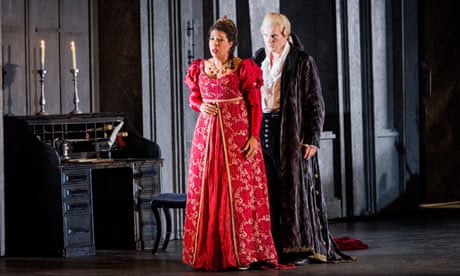By comparison with the glare surrounding Welsh National Opera's Tudor trilogy, Puccini's Tosca has seemed like the autumn season's afterthought. But, with two queens already dispatched to the execution block in the former, there's also a bit more blood and gore than previously in this revival of Michael Blakemore's 1992 production. Making a spirited UK debut in the title role, the American soprano Mary Elizabeth Williams murders Baron Scarpia, the evil chief of police, with several vicious stabs, so that there's no mistaking either her intention or the outcome. Williams is a big-voiced singer with a vibrant presence, and the central act was the stronger for her feistiness.
Yet the opera only works well when the political background of early 19th-century Rome emerges strongly and, with it the radical affiliations of artist Mario Cavaradossi, described with disdain by Scarpia as a "Voltairean". In this respect, tenor Gwyn Hughes Hughes's Cavaradossi had real fire in his belly and in his tone: he articulated the passion of his principles and his passion for Floria Tosca with equal emotional validity, and there was a ringing conviction to his delivery of all the big arias.
It was disappointing, then, that Claudio Otelli's Scarpia was not the personification of evil that would have completed a strong trio of principals. Elegant of bearing and with some well-projected sounds in the upper part of the voice, Otelli seemed ineffectual below a certain pitch and volume, with too little sense of snake-like lechery and cruel machinations.
Daniel Grice was well cast as the escaped political prisoner Angelotti, while William Robert Allenby brought a nicely comic humour to the Sacristan. Under the baton of music director Lothar Koenigs, the WNO chorus made the climax to the first act and the Te Deam robustly resonant. But the Ku Klux Klan-style masks among the bearers in the bishop's procession strike a curious note.

Comments (…)
Sign in or create your Guardian account to join the discussion